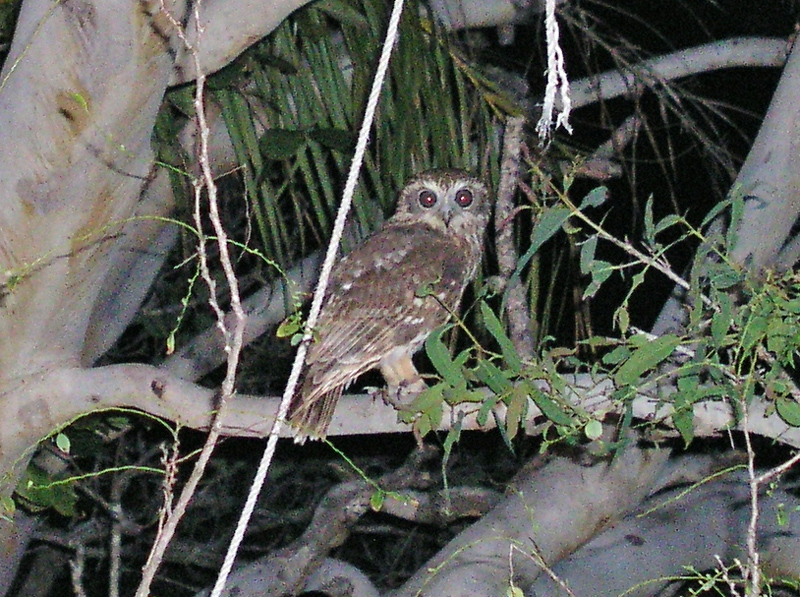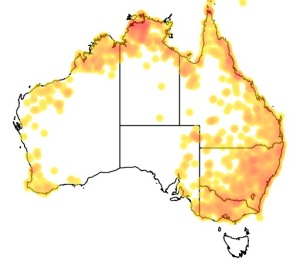Colours
Distinguishing features
They are coloured brown with white spots on their wings and a streaked chest. They have large eyes that have a yellow iris, a dark tipped beak and almost no facial mask. Their underparts are brownish-grey and coarsely spotted white with their tail and flight feathers being strongly banded brown and white.
The smallest are found on Cape York Peninsular and the largest are found in Southern Australia. (Wikipedia)
Size
- From 39 cm to 44 cm (Length of specimen)
Wingspan
- From 85 cm to 120 cm
Synonyms
Distribution
Distribution and habitat preferences
It lives in mainland Australia along the eastern and northern coast of the continent and the south west areas surrounding Perth. Inland they occupy areas near lakes and waterways or other wooded environments. They also live in drier parts of Papua New Guinea and the Moluccas (Halmahera, Morotai, Bacan and Obi).
They choose to live in forests or woodland areas that have large trees for nesting and foliage cover for roosting. They often reside near river, swamp or creek beds as these features often have large trees with hollows required for nesting and the productivity to support sufficient prey. The only detailed studies of home-ranges have been conducted in southern Australia where the species is declining. (Wikipedia)
Diet
It has one of the broadest diets of any Australian owl. They hunt in timbered and open habitats but usually rely on trees as hunting perches. Their diet includes prey taken from the ground, the trees, the surface of waterbodies and directly from the air. In some locations mammals make up the majority of prey biomass with prey sizes from mice and small carnivorous marsupials up to rabbits and Brushtail Possums. Sugar Gliders are a frequent prey item. Bats of all sizes are also commonly taken.
In some areas, bird prey items make a sizeable contribution to the diet. Birds up to the size of Sulphur-crested Cockatoos and ducks are taken, but smaller birds are more commonly taken. One frequent prey item is the Tawny Frogmouth, a nocturnal bird of Australian forests and woodlands.
Insect prey items can also dominate the prey item count. Beetles and moths are commonly taken on the wing. A range of other insects are also consumed. Occasionally frogs, reptiles, fish or crustaceans are eaten. (Wikipedia)


